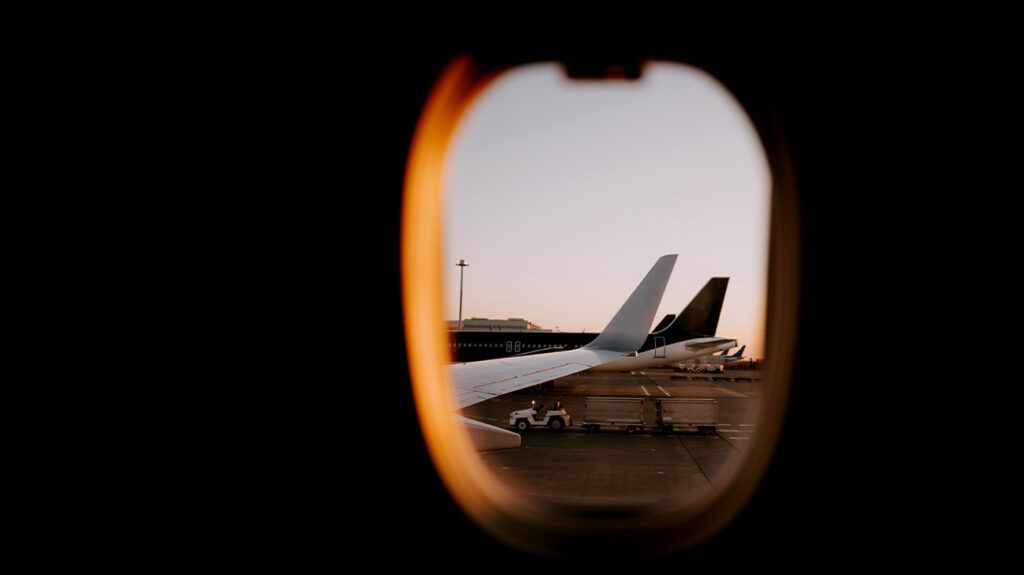Having bronchitis, which refers to inflammation of the airways, may affect whether it is safe for someone to fly. Some people with bronchitis may experience an increase in symptoms during air travel.
Bronchitis involves inflammation of the bronchial tubes that carry air to the lungs. The condition causes coughing, increased mucus, and shortness of breath.
Doctors classify bronchitis as chronic, meaning long term, or acute, meaning short term. Chronic bronchitis is a form of chronic obstructive pulmonary disease and is not contagious. Conversely, acute bronchitis usually occurs due to an infection, such as a virus, which makes it contagious.
Having bronchitis may affect how safe or comfortable it is for someone to fly. In some cases, air travel may affect symptoms or spread the infection.
This article explores whether someone can fly with bronchitis, the risks flying may pose for a person with the condition, and tips for air travel with bronchitis. It also discusses when someone needs to consider speaking with a healthcare professional.

There is no exact rule on whether someone with bronchitis can safely fly. Safe air travel while having the condition may depend on the severity and type of bronchitis. The two primary considerations for flying with the condition include a possible increase in symptoms and transmitting infection.
For instance, acute bronchitis most often occurs due to a virus. Someone who flies with acute bronchitis risks transmitting the virus to others and needs to consider that. How long the infection remains contagious varies depending on the virus or other microorganism causing it.
According to the
Chronic bronchitis refers to inflammation of the bronchial tubes that causes coughing that persists for at least 3 months. It often develops due to smoking.
In some cases, air travel can potentially increase symptoms of either type of bronchitis. Although it may vary, air cabin pressures stay maintained at the equivalent of about 6,000–8,000 feet above sea level. This change may cause an increase in symptoms in people with lung conditions.
Individuals with chronic bronchitis who use supplemental oxygen need to check with a healthcare professional to confirm it is safe for them to fly and to determine if their oxygen flow needs to increase during flight.
Also, people should contact the airline. According to the American Lung Association, airline policies regarding acceptable oxygen concentrators may differ.
The risks of flying with bronchitis may depend on whether the condition is short term or long term. However, possible risks include:
- Decreased oxygen levels: Due to the pressure change in a plane, it contains
less oxygen than the air a person typically breathes. Less oxygen in the air means lower oxygen levels in the blood. People with bronchitis, especially if it is long term, have an increased risk of not getting enough oxygen into their lungs. - Increased shortness of breath: Decreased oxygen levels may lead to increased shortness of breath or difficulty breathing while flying.
- Disruption in medication schedule: Air travel can interfere with a person’s medication schedule. Taking portable nebulizers or inhalers onboard may help someone maintain their dosing schedule.
- Exposure to lung irritants: The air inside the cabin has low humidity. The dry air may increase irritation to sensitive airways in people with bronchitis.
- Spreading infection: If bronchitis is due to a virus, the infection may spread to others while flying. About
90–95% of cases of acute bronchitis occur due to a viral infection.
Someone with bronchitis who plans to fly may take certain steps to make the process smoother. They can consider the following
- talking with a healthcare professional to ensure air travel is safe for their circumstances
- packing medication, such as inhalers, in a carry-on bag
- checking with the airline about the use of supplemental oxygen or nebulizers onboard if necessary
- sitting near the bathroom for quick access in case of severe coughing
- taking a direct flight to the destination
- getting plenty of sleep the night before the flight to reduce fatigue
- drinking plenty of fluids, which may help thin mucus and ease coughing it up
- avoiding alcoholic drinks, which can have a sedative effect and may decrease blood oxygen levels further
A person needs to consult a doctor if bronchitis symptoms do not go away after 2 weeks or if symptoms reappear often. Frequent bronchitis symptoms may indicate a more serious lung condition and need evaluation by a doctor.
The symptoms of bronchitis include:
- cough with mucus production
- fatigue
- chest pain
- shortness of breath
- wheezing
- a low grade fever, which is
below 100.4°F (38°C)
It is also essential to speak with a doctor if someone plans to fly and has questions about oxygen onboard the plane or using a nebulizer.
Certain
- difficulty breathing
- racing heart rate
- fast breathing
- blue fingernails, lips, or skin
- confusion
- chest pain
- blurry vision
- headaches
Bronchitis refers to inflammation of the bronchial tubes. It can occur as a long-term condition, often due to smoking, or a short-term condition, usually from infection. Flying with bronchitis may increase the frequency of symptoms, such as wheezing, coughing, and shortness of breath.
Individuals with bronchitis who plan to fly need to check with their doctor to ensure it is safe. They also need to consider that airlines can refuse boarding to anyone who appears too unwell to fly.
